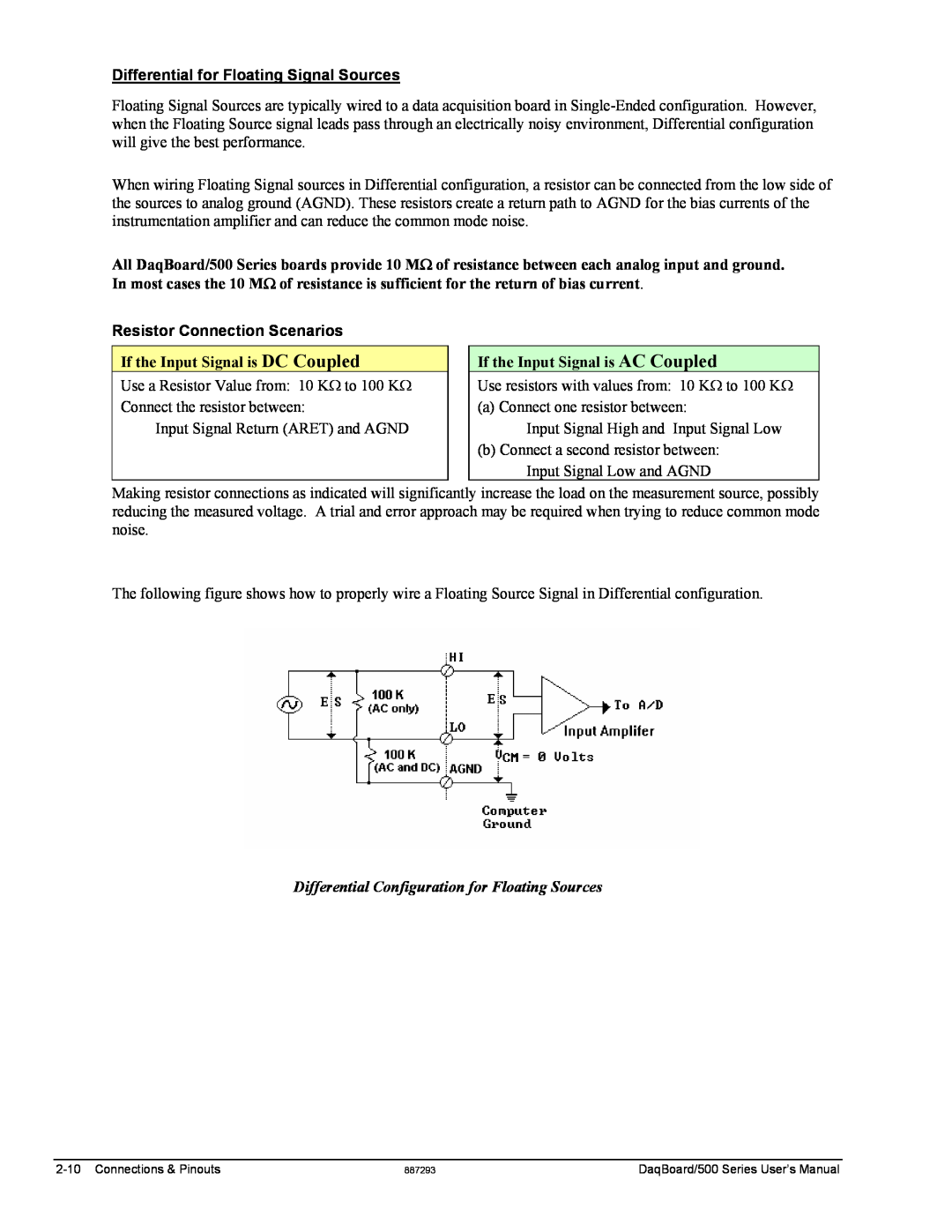OMB-DAQBOARD-500 Series
16-Bit, 200-KHz PCI Data Acquisition Boards
User’s Guide
Shop online at
Servicing North America
OMEGAnet Online Service omega.com
Internet e-mail info@omega.com
For immediate technical or application assistance
Specifications and Calibration
Warnings, Cautions, Notes, and Tips
⇒ Programs ⇒ Omega DaqX Software
3 - Configuration
Table of Contents
OMB-DAQBOARD-500 Series, Installation Guide 1 - Introduction
6 - Specifications Glossary
Windows Windows XP
This product requires one of the following Operating Systems
DaqView/500 Authorization Code
OMB-DAQBOARD-500 Series
Installation Guide
Reference Note
Installation, A Pictorial Overview
Step 1 - Install Software
IMPORTANT Software must be installed before installing hardware
Reference Notes
2. Remove the PC’s cover. Refer to your PC Owner’s Manual as needed
Step 2 - Install Boards in available PCI Bus-slots
IMPORTANT Bus Mastering DMA must be Enabled
9. Secure the board by inserting the rear-panel adapter-plate screw
Step 3 - Configure Boards
Accessing the DaqBoard/500 Properties Tab
Test Hardware Tab
Using “Add Device”
Step 4 - Test Hardware
Introduction
Basic Information
DaqBoard/500 Series User’s Manual
Block Diagram
DaqBoard/500 Series Block Diagram
Analog I/O
Board Features
Timer 0 and Timer
Digital I/O
947294
Connections and Pinouts
Overview
Signal
68-Pin SCSI Type III Pinout
Standard 68-Pin SCSCI Type III, Socket Female Connector with Orb
Power
Differential Channels, Pin Reference
Signal Definitions
Analog Input Channels
HI + Pin #
Clocks, Triggers, Counters, and Timers
Power Line
Ground Lines
Screw Terminals for TB1 Side
TB-100 Terminal Connector Option
Screw Terminals for TB2 Side
2-6 Connections & Pinouts
Differential Channels Screw Terminal Reference
Connecting User Wiring
External Connections
HI +
Single-Ended Configuration
Signal Types
Choosing A/D Input Configuration
Single-Ended
Differential Configuration for Grounded Sources
Differential DIFF
Differential for Grounded Signal Sources
If the Input Signal is AC Coupled
Differential for Floating Signal Sources
If the Input Signal is DC Coupled
Differential Configuration for Floating Sources
Analog Input Configuration
Configuration
Configuration through Software
ADC Ranges
Range Configuration
DAC Ranges
DAC OUTPUT DaqBoard/500 DAC Range Resolution
Microvolt Resolution
Overview …… Out-of-the-BoxTM Software ……
Software and Board Operation
Out-of-theBoxTM Software
Drivers for Third-party, Icon-driven Software …… DaqCOM Driver ……
LabVIEW
Drivers for Third-party, Icon-driven Software
DaqCOM Driver
4-2 Software and Board Operation
Theory of Operation
Process Definitions
ADC External Event Clocking
Clocking the ADC
ADC Pacer Clocking
ADC Maximum Clock Rate
ADC External Gate
Starting Triggering an ADC Acquisition
ADC Software
ADC External Trigger
ADC Clock and FIFO Errors
Stopping an ADC Acquisition CLOCK
Clocking the DAC
Digital Acquisition
DAC Software Update
DaqBoard/500 Only
4-8 Software and Board Operation
Overview ……5-1 CE Standards and Directives …… Safety Conditions ……5-2
CE-Compliance
CE Standards and Directives
Emissions/Immunity Conditions ……5-2
Safety Conditions
Emissions/Immunity Conditions
Analog Inputs
Specifications
General
of calibration
Analog Input Triggering/Clocking
6-2 Specifications
Digital Inputs / Outputs
Analog Outputs DaqBoard/500 Only
Physical & Environmental
Counter - 1 Counter designated as CNTR1
Glossary
single-ended mode
referenced to common
Page
Page
WARRANTY/DISCLAIMER
RETURN REQUESTS/INQUIRIES
OMEGA…Of Course
324545A-01
Shop online at omega.com
TEMPERATURE
